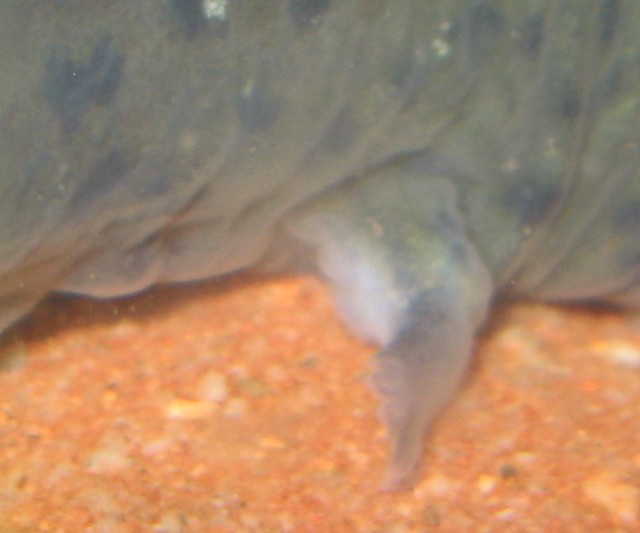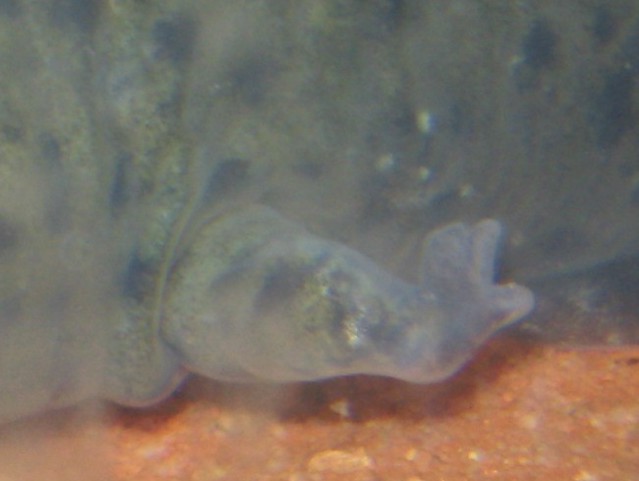The salamander is the only known vertebrate to regenerate all of its limbs as an adult. The Axolotl is a kind of salamander that can regenerate any limb that is lost or damaged as long as the injury that occurred did not lead to the Axolotl dying. These regenerative powers have been under constant study but one obstacle that studies have faced is that the Axolotl has
the largest known animal genome, 10 times larger than the human genome. So, to study the Axolotl’s genome required a huge commitment of time until now.
This new discovery, found in the genes of the resilient Axolotl, takes us one step closer to cracking the code behind bodily regeneration
Researchers at the Department of Molecular, Cellular, and Developmental Biology at Yale University amputated the tails of chimeric Axolotls and studied them along with the regenerated tails. Chimeric refers to an organism that has more than one set of DNA and these sets are distinct. The researchers studied the tails using the CRISPR/Cas 9 method, where the Cas 9 gene behaves like a pair of scissors and is used to cut out and retrieve a specific section of genetic material from DNA. By using this method, the researchers discovered that the Feutin-B and Catalase genes controlled the process of gene regeneration.
Blastema is the primary formative material from which plant and animal cells are formed. Recent genetic studies of Axolotl limb blastemal cells showed that the genes of these cells were highly similar, suggesting that these cells shared a regenerative genetic program. This means that an impairment of blastemal-enriched genes would result in impairing of the cells’ regenerative ability.

Image from Ellenant via Flickr.
Axolotl limb regeneration. A juvenile Axolotl can take between 40-50 days to regenerate a limb

In this research, specimens were generated through artificial fertilization of eggs from females. Grafts from the regenerative limb buds of the Axolotls were taken to collect genetic material. Grafts were collected across multiple developmental stages to find an optimal stage. These grafts showed that desired genes reoccurred in regenerated limbs. This suggests that regeneration in Axolotls is a high-quality process that accurately recreates cells.
Next, grafts were taken from amputated and regenerated limbs of haploid specimens. Haploid refers to an organism that has one complete set of chromosomes. The CRISPR/CAS 9 method was used to create haploid studies of chimeric Axolotls which is beneficial as a haploid study would only have one copy of the massive genome making it easier to study. In these studies, the number of copies of two noteworthy genes decreased from primary limbs to regenerated limbs; Feutin-B and Catalase.
Mutants of these two genes were created and tested for regeneration by amputating their tails. Regeneration in these mutants started but outgrowth was not complete compared to unaltered specimens which showed that these genes did not control onset of regeneration but did control the process overall.
Until now, the creation of specimens that did not have functioning Feutin-B and Catalase was possible. However, it was not possible to trace the functional changes in these genes in these specimens. This problem was circumvented by the use of CRISPR/CAS 9 to study the genes. Catalase is an enzyme that plays an important role in protecting cells from oxidative damage, while Feutin-B and Feutin-A are found in the liver in high numbers from where they are released into the blood. These Axolotl genes already perform a function in humans and might be integral to the development of regenerative properties in humans.
Sources:
Sanor, L., Flowers, G. P., Crews, C. 2020. Multiplex CRISPR/Cas screen in regenerating haploid limbs of chimeric Axolotls. eLife 9.
For more information, go to: https://elifesciences.org/articles/48511#metrics.

Alex
"This title was very eye catching! That is so interesting that such a ..."
Alex
"This is really interesting! The fact that crops and plants are damaged is ..."
Alex
"Well done, this article is great and the information is very captivating! Ethics ..."
Alex
"I was intrigued throughout the whole article! This is such an interesting topic, ..."
Alex
"This is such an interesting article, and very relevant!! Great job at explaining ..."
Grandpa
"Honey You Did a good job I will forward to my eye doctor "
murphymv
"This article is fascinating because it delves into the details of the research ..."
murphymv
"I agree, adding the photo helped solidify the main finding. "
murphymv
"This is a fascinating finding. I hope this innovative approach to improving transplants ..."
Sherzilla
"This is a great article! I would really love to hear how exactly ..."
Sherzilla
"It's disappointment that these treatments were not very effective but hopefully other researchers ..."
Sherzilla
"I agree with your idea that we need to shift our focus to ..."
Sherzilla
"It's amazing to see how such an everyday household product such as ..."
Lauren Kageler
"I will be interested to see what the data looks like from the ..."
Lauren Kageler
"A very interesting article that emphasizes one of the many benefits that the ..."
maricha
"Great post! I had known about the plight of Little Browns, but I ..."
Sherzilla
"I assumed cancer patients were more at risk to the virus but I ..."
Sherzilla
"Great article! It sheds light on a topic that everyone is curious about. ..."
maricha
"This article is full of really important and relevant information! I really liked ..."
maricha
"Definitely a very newsworthy article! Nice job explaining the structure of the virus ..."
maricha
"It's interesting to think that humans aren't only species dealing with the global ..."
murphymv
"This is very interesting and well explained. I am not too familiar with ..."
Lauren Kageler
"Great article! This post is sure to be a useful resource for any ..."
Lauren Kageler
"Definitely seems like an odd pairing at first, but any step forward in ..."
murphymv
"What an interesting article! As you say, height and dementia seem unrelated at ..."
murphymv
"Great article! I learned several new methods of wildlife tracking. This seems like ..."
murphymv
"Very interesting topic! You explained cascade testing and its importance very well. I ..."
Alex
"This article is really interesting! What got me hooked right away was the ..."
Sabrina
"I found this article super interesting! It’s crazy how everyday products can cause ..."
Erin Heeschen
"I love the layout of this article; it's very eyecatching! The advancements of prosthetics ..."
murphymv
"Awesome article! I like the personality in the writing. Flash Graphene not only ..."
murphymv
"Very interesting work! I don't know a whole lot about genetics, but this ..."
Cami Meckley
"I think the idea of using virtual reality technology to better help prepare ..."
Erin Heeschen
"I wonder if there's a connection between tourist season and wildfires in the ..."
Ralph berezan
"Not bad Good work "
Michelle
"This sounds like it would be a great tool for medical students! ..."